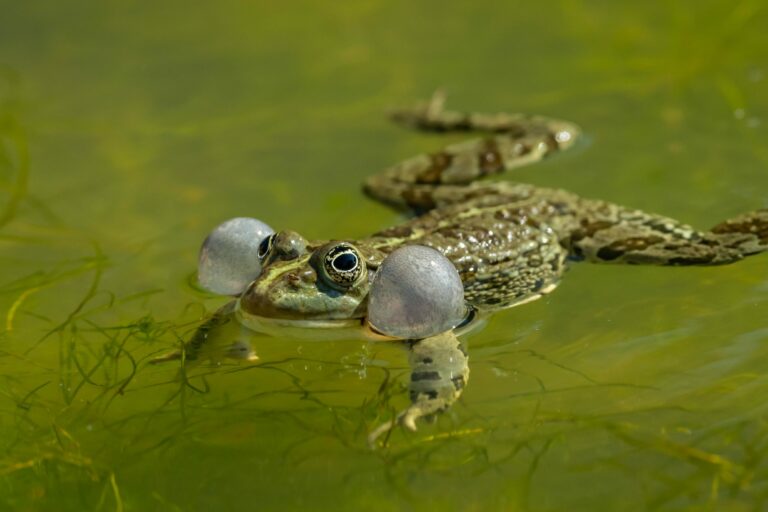Pelophylax ridibundus

The marsh frog is green to brownish on the upper side and features a light green stripe and dark spots on the back. The underside is darkly marbled. Pelophylax ridibundus can reach a body length of up to 14 cm. Males of this species possess two vocal sacs that are inflated on the sides. Marsh frogs are predominantly found in marshland landscapes, and they utilize large, deep still waters with ample sunlight and vegetation as breeding sites. The breeding season begins in May, and the female can lay up to 12,000 eggs. The marsh frog always resides near water and hibernates in the muddy sediment or beneath stones at the bottom of the water body. Its natural predators include fish, water turtles, various bird and mammal species, as well as the grass snake (Glandt 2018).
Diet: The marsh frog feeds on invertebrates such as insects, as well as other amphibians, fish, and even mice (Glandt 2018).
Conservation status: The marsh frog is classified as “Least Concern” in the IUCN Red List of Threatened Species. In Germany, it is considered “specially protected” under the Federal Nature Conservation Act and the Federal Species Conservation Ordinance.
-
Glandt, D (2018)Praxisleitfaden Amphibien- und Reptilienschutz. Schnell – präzise – hilfreich. Berlin, Heidelberg: Springer Berlin Heidelberg.